Latest Posts
Storytelling is at the core of who we are as humans. It is how we learn, identify ourselves, and connect to others in the past, the present and the future. Oral history is both one of the oldest historical methods and one of the most modern, using and taking advantage of the latest digital technologies. In today’s activity, teens will learn how to conduct an oral history interview as they talk to a household member about their experience of the global pandemic. Share your findings with us with the hashtag #HistoryatHomeTeens.
Chicago is famous for foods such as hot dogs, deep-dish pizza, and the fabulous neighborhood restaurants that feature food from around the world. The Chicago History Museum has many food-related items in our collection—menus, invitations to fancy dinners, cookbooks, and photographs of restaurants that all tell us the city’s food history. Families share history through their food too! Sometimes there’s a special recipe handed down from one person to another or families start their own traditions such as celebrating a birthday with a family member’s favorite dish. Today’s activity is all about your family’s favorite foods!
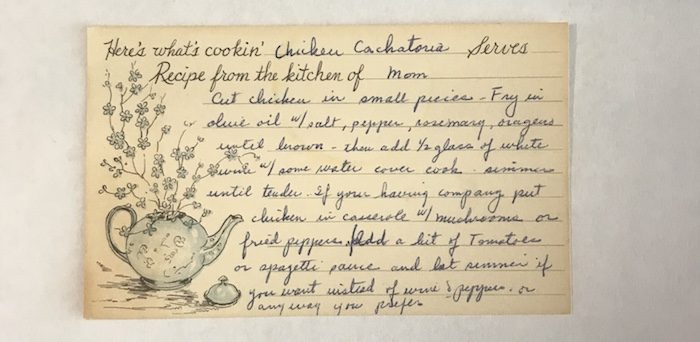
What do your favorite foods say about your family? Explore recipes and traditions around food and celebrate your family! Share your family’s favorite foods on social media using the hashtag #CHMatHomeFamilies
Sometimes we learn our family history through the stories we tell. These stories are called oral histories and are a very important and fun way to learn about the past. Make sure your family stories are saved by having younger family members interview older family members. You might be surprised what you learn when you ask a family member to share their memories of growing up, moving, or work!

Important family history is preserved through the stories we tell. Explore your family history and pass your stories from one generation to the next through this easy interview activity. Share your story on social media using the hashtag #CHMatHomeFamilies
Even the most ordinary day is important and helps historians understand how people lived in different time periods. We can learn about people’s daily lives thanks to letters, diaries, journals, and scrapbooks. More recently, blogs and vlogs also record everyday life. In today’s challenge, you get to document one day in your life, then choose how to share the story of your day with your family and friends.
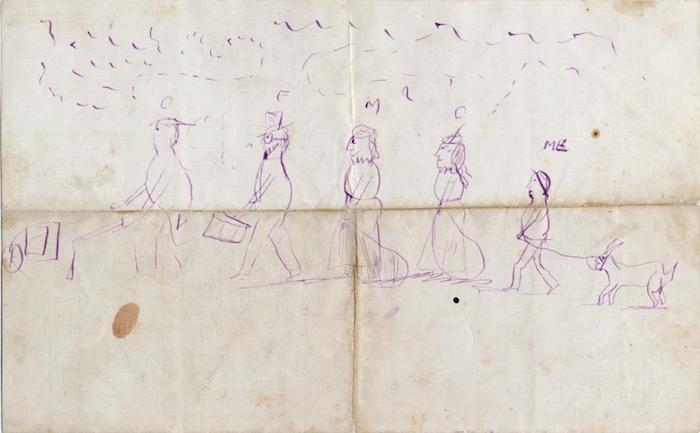
Historians learn about the past from ordinary people who took the time to record details of their everyday lives. Now it’s your turn to share the story of your day! Share your stories on social media using the hashtag #CHMatHomeFamilies.
Photographs are one important way historians learn about the past. They tell stories about the time and place they were taken and the people and landscape that were captured. Looking at photographs can show us the things people did for fun, how a place used to look, how people dressed during a particular time period, and even the pets they loved. In today’s challenge, you’ll explore your own photographs of family and friends.

What stories do your photographs tell? Take a close look at one photograph and talk about its details. Have fun pretending to be statues and restaging the image. Then take a new picture to share with family and friends. Share your old and new photographs on social media using the hashtag #CHMatHomeFamilies.
While we often think of famous people when we think of historymakers, you and your family also have important stories to share! Historians study the history of ordinary people to understand how our city and nation have changed over time. The traditions you practice, the places you live, the work your family members do, and the languages you speak all contribute to the rich diversity of life today and are part of the history each of us make every day. This week, our activities take a personal look at you and your family.

Your home is full of family history! In this scavenger hunt challenge, find objects around the house that spell out your first or last name. Arrange the selected items into a display and share your exhibition on social media using the hashtag #CHMatHomeFamilies.
Chicago is a city of immigrants. In 1850, 50% of Chicago’s population was born outside of the US, with Irish and Germans making up a bulk of those residents. Many more European immigrants came to Chicago throughout the 1800s and into the 1900s, including Polish, Italians, Jewish, Lithuanians, among others. African Americans also migrated from the South to Chicago, and other northern and west coast cities, starting in the 1910s in well into the 1970s. This became known as the Great Migration. Although Mexican immigrants were making Chicago their home since the early 1900s, a large number of Mexican and other Latin American immigrants made their way to Chicago in the mid-1900s, and continue to arrive and thrive in the city.
All of these immigrants and migrants had to make the tough decision to pack up their trunks, leave their homes, and set out for a new life. With them, they most likely brought personal, cultural, and other important items to remember and honor their previous homes, anchor their new lives with familiar items, and helped to tell their story.
What items do you have, that you would put in your trunk that would help tell your story?
Find directions & start the activity here!
Flags tell stories! The Chicago flag is full of symbolic meaning: the stars represent important events in the city’s history, the blues stripes stand for waterways, and the white stripes for where people live. Flags aren’t just for cities or countries. Some schools, such as universities and their sports teams, also have flags. In the past, families had flags with symbols on them to stand for things that were special to that family.
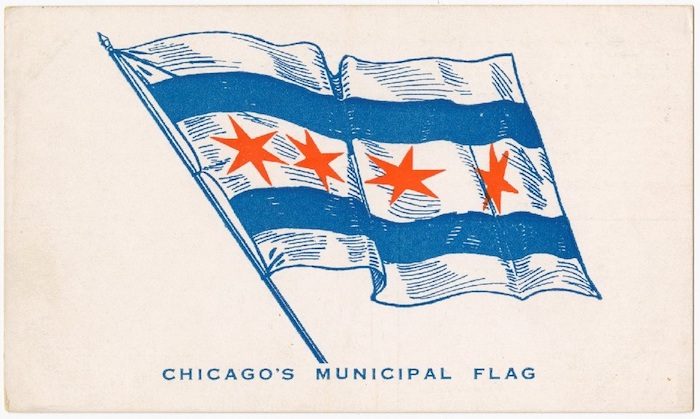
What’s special about your family? Do you have a family saying? What activities do you like to do? What are your traditions? In this activity, ask your kids to design and make a family flag. Share your flag on social media using the hashtag #CHMatHomeFamilies.
In its heyday, Chicago’s Essanay Studios was one of the industry’s most prominent producers of silent films.
Founded in 1907 by George Spoor and Gilbert Anderson, Essanay (“S” and A”) was based in Uptown and known for its comedies and westerns. Its stars included Charlie Chaplin and Gloria Swanson, and cofounder Anderson also played a part in his company’s success—he starred as “Bronco Billy” in short westerns and produced one a week for 376 straight weeks.
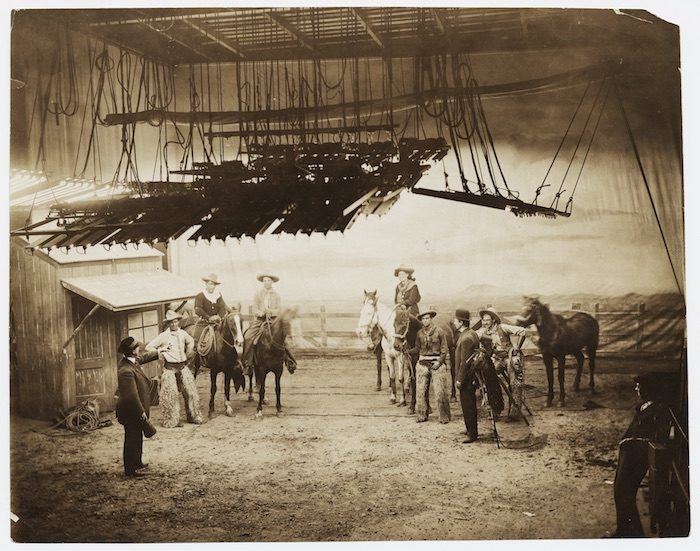
Film set for a silent western featuring Gilbert M. Anderson as “Broncho Billy” at Essanay Studios in Chicago, c. 1910. CHM, ICHi-016886
While Chaplin was at Essanay from only 1915 to 1916, he was undoubtedly its biggest star. Best known for his iconic role as the bumbling, childlike Tramp, he was also in several shorts, such as The Champion, The Bank, Shanghaied, and His New Job, which put Essanay on the industry map. However, warmer weather and higher pay beckoned Chaplin to the Mutual Film Company in Hollywood, and his departure expedited the decline of Essanay, which is now remembered by only the most serious movie buffs. Learn more about Chicago’s film history.
Digital Chicago
Developed in partnership with Lake Forest College, Digital Chicago is a collection of digital projects about forgotten or at-risk aspects of Chicago’s history and culture. Musicologist Don Meyer sought to explore the musical practices of silent films during the Progressive Era, so he recreated the music of Essanay’s film Max Wants a Divorce (1916) as it might have been heard in theaters at the time. Listen now.
The Chicago flag is well-known for its design with the iconic four red stars, which represent Fort Dearborn, the Great Chicago Fire, the 1893 world’s fair, and the 1933 world’s fair. Since many things have happened in Chicago since 1933, some people have championed the idea to add a fifth star to the flag.
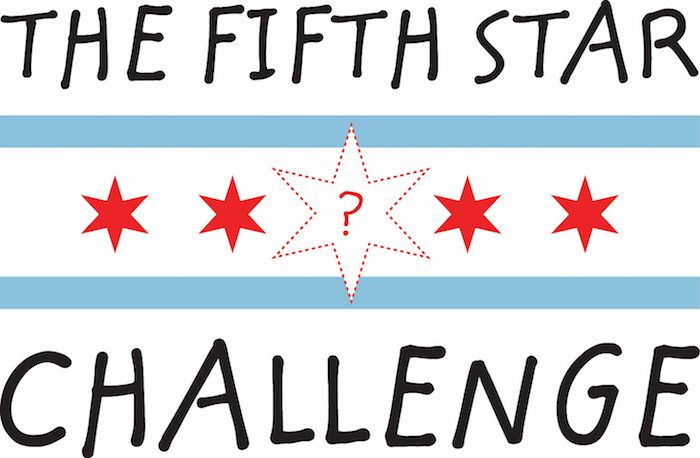
In this activity, kids get to decide what they think a fifth star on the Chicago flag would represent. Ask them to write or draw an explanation for their choice. Share about your fifth star on social media using the hashtag #CHMatHomeFamilies.